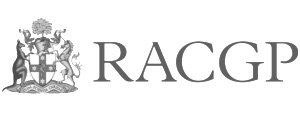Topical Treatments
Topical Cream
AKs are usually multiple and commonly occur in areas known as ‘fields’. The localised nature of this pre-cancerous change is known as ‘field change’ and includes visible and invisible (subclinical) AKs. ‘Field Treatments’ are those treatments that attempt to treat the whole field which generally results in higher rates of clearance as the subclinical lesions located between the visible lesions get treated as well - which would ultimately have surfaced at some point. When actinic keratoses are numerous and widespread, topical creams and gels are especially useful by themselves or in combination with other treatments. They treat both visible and invisible lesions with a minimal risk of scarring.
In our experience at the My Skin Clinic we have found field treatments provoke powerful responses that require careful monitoring to ensure the best result.
Thorough evaluation is needed to select the correct agent, close monitoring to ensure compliance, consistency of application and effect, to minimise side effects, and to ensure the best outcome.
One of the most commonly used topical medications for AK is 5-fluorouracil (5-FU) cream, a topical chemotherapy agent rubbed gently onto lesion bearing areas of skin once or twice daily for four to six weeks.
It can be used on many of the commonly affected areas. Temporary side effects include redness, swelling, and crusting but for most the therapeutic benefits outweigh any temporary discomfort. It is generally applied using a gloved finger, and increases the rate of sun damage (photosensitivity) and so treatment is preferred in winter times or in patients who are able to stay indoors and wear extensive barrier clothing for the whole of the treatment period when outside.
The treated areas usually heal within two weeks of ceasing treatment, there is rarely any scarring, and the cosmetic result is usually good to excellent.
5-FU is the ‘grandaddy’ of topical agents for AK having been around for over 50 years and remains the cheapest.
Ingenol mebutate - the active ingredient from ‘milkweed’ - has been commercially extracted and offers one of the shortest treatment times for any of the field treatments. It is applied daily for just 2 days on the body, and 3 days on the face. After this an intense reaction develops and by Day 10-14 the patient has effectively healed with only residual redness. This redness resolves almost completely by itself in the ensuing 2-3 months. This treatment generates results that are very similar to 5-FU in a fraction of the time.
It is a favourite of patients who are in paid employment or in public-facing roles.
It is the newest field treatment having been released as recently as 2013.
A gel containing the non-steroidal anti-inflammatory drug diclofenac may also be effective for people whose skin is very sensitive to other topical treatments.
The gel is applied twice a day for three months, as courses of treatment under three months have proven less effective. Recent research found that a formula of 3 percent diclofenac twice daily successfully eliminated actinic keratoses in organ transplant patients (who are highly susceptible to actinic keratoses and skin cancers) and also was effective at preventing invasive Squamous Cell Carcinomas .
Another cream containing the immune-modifying drug imiquimod has been available for several years. This cream is applied to AK bearing areas between 2 and 5 times a week for between 4 to 16 weeks as per the therapeutic response. Clearance rates can be similar to 5-FU, but due to the mechanism of action this drug can cause side-effects of an immune nature - like muscle and joint pains, and what presents as a viral-like syndrome of aches and pains, even low grade fevers and runny noses can occur. Occasionally these side effects can be significant enough for treatment to be stopped.
| Treatment Questions | Details |
|---|---|
| Treatment Name | Topical Chemotherapy |
| Treatment Description | Cream/gel application |
| Treatment Approach | Self or by RN’s at Clinic |
| Benefits of Treatment | Best clearance rate, able to clear subclinical lesions |
| Features of Treatment | Non invasive, causes transient disfigurement and pain 2-10wks |
| Alternative Therapies | Cryo, curettage, PDT, laser |
| Pretreatment Prep | Clean and moisten skin (at the most), decrust advanced/thicker lesions |
| Post Treatment Recovery | What to Expect pain, redness, swelling, crusting ‘like a pizza’ |
| Stages 1) redness 2) blistering 3) crusting 4) resolution | |
| Care Plan & Teams | |
| Downtime from work or lifestyle 1-8wks | |
| Prognosis for Treatment | Range of outcomes usu clearance >70-80%+ can be higher or lower |
| Case Studies | |
| Research | |
| Costs | Efudix $100avg, Picato $450avg, Aldara $480avg, Solaraze $400avg |
| Funding Options |




